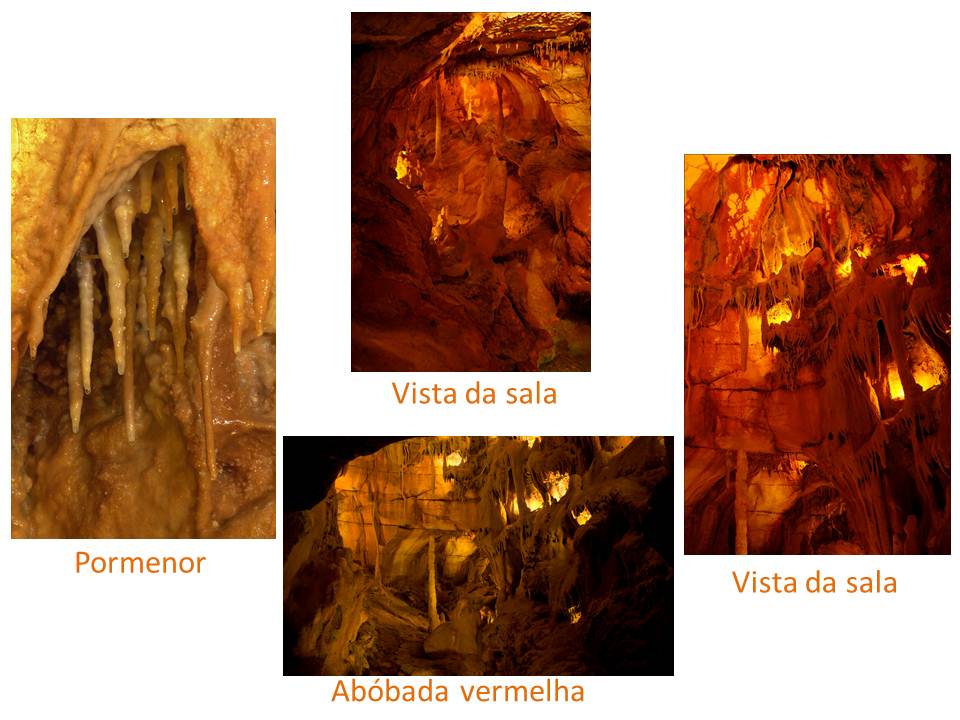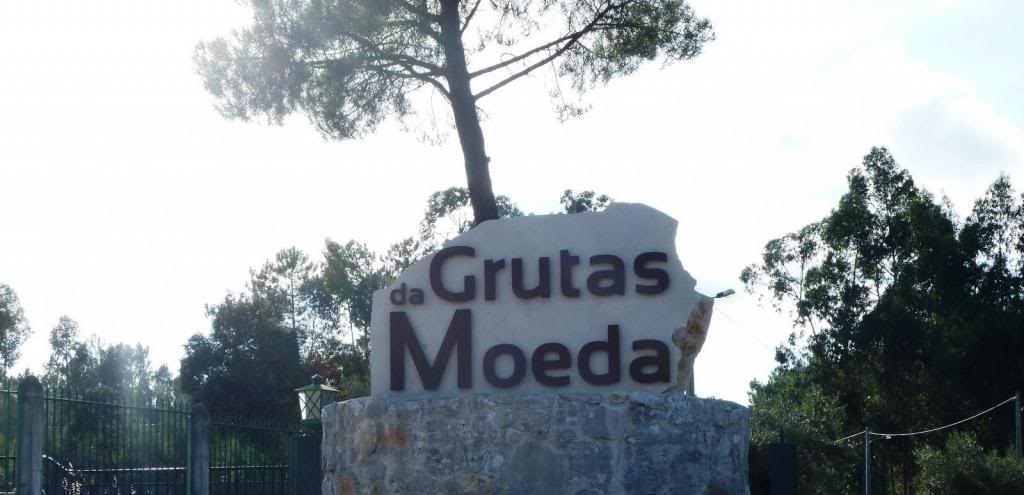Grutas da Moeda EarthCache
-
Difficulty:
-

-
Terrain:
-

Size:  (other)
(other)
Please note Use of geocaching.com services is subject to the terms and conditions
in our disclaimer.


História da descoberta
As Grutas da Moeda situam-se em S. Mamede, concelho da Batalha, apenas a 2 km de Fátima. A sua descoberta aconteceu em 1971, por dois caçadores que perseguiam uma raposa que se terá refugiado num algar existente no meio do bosque. Movidos pela curiosidade, entraram e percorrendo o seu interior aperceberam-se da sua beleza natural, com galerias repletas de inúmeras formações calcárias.
 Durante vários meses o local foi sendo explorado pelos dois homens, permitindo a descoberta de várias galerias que se viriam a revelar de interesse científico e turístico e que hoje fazem parte da área visitável da gruta. Posteriormente, uma equipa de geólogos e espeleólogos confirmou o seu interesse científico, havendo desde esta fase e até aos dias de hoje, uma profunda preocupação na preservação rigorosa da gruta e de toda a área envolvente.
Durante vários meses o local foi sendo explorado pelos dois homens, permitindo a descoberta de várias galerias que se viriam a revelar de interesse científico e turístico e que hoje fazem parte da área visitável da gruta. Posteriormente, uma equipa de geólogos e espeleólogos confirmou o seu interesse científico, havendo desde esta fase e até aos dias de hoje, uma profunda preocupação na preservação rigorosa da gruta e de toda a área envolvente.
A cada uma das salas e galerias foram atribuídas denominações, sugerindo diferentes imagens: Lago da Felicidade, Sala do Presépio, Pastor, Cascata, Cúpula Vermelha, Marítima, Capela Imperfeita, Abóbada Vermelha e Fonte das Lágrimas. A extensão visitável da Gruta é de 350 metros e a sua profundidade é de 45 m abaixo da cota de entrada. A temperatura ronda os 18.º C, mantendo-se constante todo o ano.
Origem e evolução das grutas
A formação de uma gruta depende do trabalho químico e mecânico das águas subterrâneas e propriedades físicas do terreno.
Tudo resulta da acção de agentes químicos e agentes físicos, sendo que, percentualmente, esta actuação pode ser considerada á razão de 90% e 10% respectivamente.
Mais concretamente a dissolução e alteração do calcário através de processos químicos realizam – se através do dióxido de carbono dissolvido na água, mais oxigénio, e ainda diversos ácidos e produtos orgânicos que provém do solo. Por essa infiltração as águas carregadas de carbono vão penetrando através das fendas e diacláses do calcário. O CO2 reage, transformando o carbonato de cálcio em bicarbonato ácido de cálcio solúvel e transportado pelas águas.
Com a circulação pelas fendas e fracturas, estas vão - se alargando lentamente dando aberturas de formas variáveis, que o trabalho das águas vai aumentando com o tempo, formando mais cavidades na rocha.
Os agentes físicos, embora considerados mínimos, merecem citação pelo trabalho de estrutura que exercem: aquecimento e resfriamento que provocam fracturas por onde penetram as águas.
É portanto óbvio que a gruta não é produto de um fenómeno estático. Tem o seu nascimento e evolução até alcançar a maturidade, quando entra em processo destrutivo até desaparecer.
Para fazer a cache não é necessário visitar as grutas. No entanto deve verificar os seguintes horários disponiveis para visitar a cache:
Outubro/Março: 09h00-17h00
Abril/Junho: 09h00-18h00
Julho/Setembro: 09h00-19h00
Encerra no dia de Natal
Nas coordenadas indicadas irão ver um tipo de rocha do sub-solo da região
Para reclamar o "found" terão de ir ás coordenadas para obter informações e responder-me via e-mail ás seguintes questões:
1 - Qual o nome da pedra exposta nas coordenadas da cache?
2 - Qual a altura das pedras que formam uma "porta"?
3 - Classifica o nivel de dureza da rocha deacordo com a escala de Mohs.
4 -As grutas foram descobertas por quem?
5 - Uma foto a comprovar a tua ida ao local seria benvinda (Não obrigatório).
Após minha autorização pode fazer o "found".
Serão removidos os "founds" não autorizados
DIVIRTAM-SE

 Discovery
Discovery
The Grutas da Moeda(Coin Caves) are located in São Mamede, municipality of Batalha, only 2 Km away from Fátima. Its discovery happened in 1971, as two huntsmen that were chasing a fox, saw it enter by one natural hole under the bushes. Moved by curiosity, they decided to enter in the galleries filled of beautiful limestone formations. Then they realised about Its natural beauty.
For some months, the two men kept exploring, reaching the galleries wich revealed to be very interesting, scientific and touristically. These same galleries, are actually the visitable part of fhe Caves. Later, a group ofin the geologists and speleologists confirmed the Caves´ scientific importance. Along the years, the main concern was and still is to preserve riguroslly, not only the Caves, but also Its surroundings.
All galleries were named after suggestion given by limestone formations and by the room´s configuration, such as: Lake of Happiness, Nativity Scene, Sheperd´s Room, Waterfall, Red Cupola, Flawed Chapel, Red Dome and Spring of Tears.
Origin and evolution of caves
The formation of a cave depends on the chemical and mechanical working of groundwater and physical properties of the ground. All results from the action of chemical and physical agents, and, in percentage terms, this action can be considered the ratio of 90% and 10% respectively.
More specifically dissolution and modification of limestone through chemical processes carried out - through the carbon dioxide dissolved in the water, plus oxygen, plus various acids and organic products coming from the soil. For this infiltration waters loaded carbon will penetrate through cracks and diacláses lime. The CO2 reacts, making the calcium carbonate in acid soluble calcium bicarbonate and transported by water.
With the circulation through cracks and fractures, these would - if giving openings extending slowly varying shapes, that the work of water will increase over time more forming cavities in the rock.
Physical agents, although considered minimal, are noteworthy for performing design work: heating and cooling causing fractures which penetrate the water. It is therefore obvious that the cave is not the product of a static phenomenon. It has its birth and evolution to reach maturity, when it comes into destructive process until it disappears
To make the cache is not necessary to visit the caves. However should check the following times to visit the cache.
October/March: 09h00-17h00
April/June: 09h00-18h00
July/September: 09h00-19h00
Closes on Christmas Day
In the given coordinates will see a kind of rock sub-soil region
To claim "found" ace coordinates have to go for information and reply me via e-mail to the following questions:
1 - What is the name of the rock exposed in the coordinates of the cache?
2 - What is the height (in meters) of rock to form a "gate"?
3 - Classifies the level of hardness of the rock according to the Mohs scale.
4 The caves were discovered by whom?
5 - A photo to prove their way to the site would be welcome (not required).
After my authorization may make "found".
Will remove the "founds" unauthorized
HAVE FUN

Additional Hints
(No hints available.)